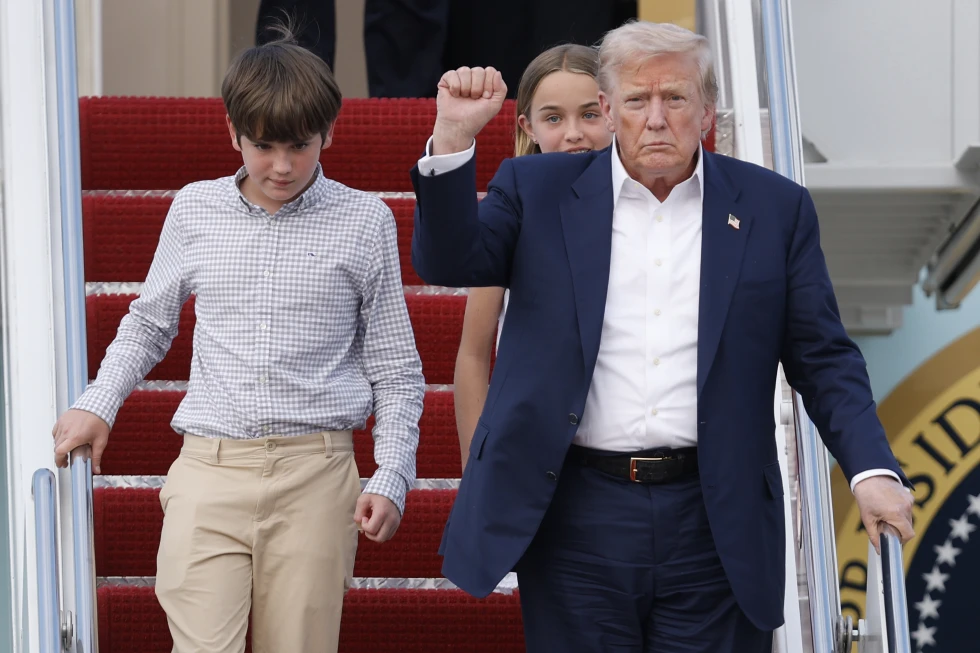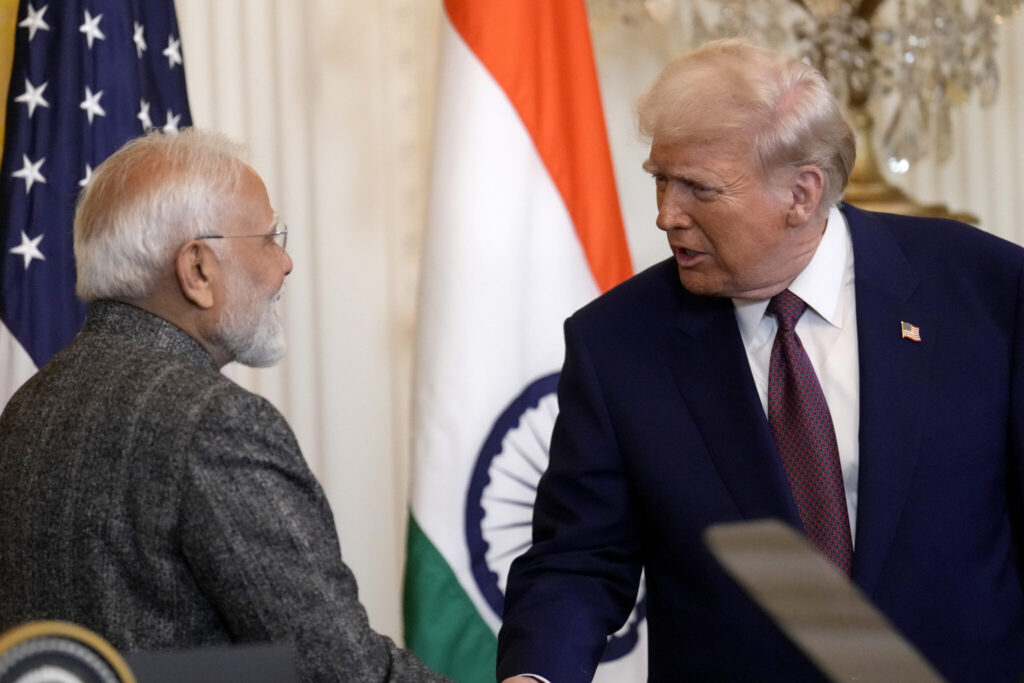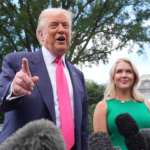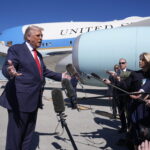Trump Slaps 25% Tariff on India Imports over Buying Russian Oil/ Newslooks/ WASHINGTON/ J. Mansour/ Morning Edition/ President Donald Trump announced a 25% tariff on Indian imports starting Aug. 1, citing unfair trade and India’s purchases of Russian oil. Additional penalties will follow due to India’s continued economic ties with Moscow amid the Ukraine war. Trump says the move is part of a broader strategy to boost U.S. manufacturing and offset budget shortfalls.

Trump’s Tariffs on India – Quick Looks
- Trump imposes 25% import tariff on Indian goods, starting Aug. 1
- Announces unspecified penalties tied to India’s Russian energy purchases
- Justifies move by citing India’s “unfairly high tariffs” on U.S. exports
- Calls India a “friend,” but says economic policies need to change
- Part of broader global tariff overhaul affecting EU, Japan, Indonesia, and Philippines
- Tariffs seen as tool to offset deficit and revive U.S. manufacturing
- U.S.-India trade imbalance reached $45.8 billion in 2024
- India maintains ties with Russia and has avoided Western sanctions over Ukraine
- India’s oil deals with Russia viewed by Trump as aiding war in Ukraine
- No finalized U.S.-India trade agreement despite earlier negotiations
Deep Look: Trump Hits India With Tariff, Targets Russian Oil Deals
WASHINGTON, D.C. — July 30, 2025 — President Donald Trump escalated his international trade offensive Wednesday by announcing a 25% tariff on imports from India, citing the country’s high barriers to U.S. goods and its ongoing energy purchases from Russia, which he claims have helped fund the war in Ukraine.
The new tariff will take effect August 1, and Trump warned of additional, unspecified penalties to follow, directly linking the sanctions to India’s military and oil dealings with Moscow.
“India is our friend,” Trump posted on Truth Social, “but its tariffs are far too high on us — and buying oil and military equipment from Russia is unacceptable.”
Strategic Punishment or Economic Gamble?
India, with a population of over 1.4 billion, has been regarded by many U.S. administrations as a crucial geopolitical counterweight to China. But Trump’s latest action introduces new tensions into that relationship, as he continues reshaping U.S. trade with aggressive tariff policies.
Trump has often used tariffs to pressure trading partners into opening their markets to American goods. The White House says this approach is intended to spur domestic manufacturing and reduce the federal deficit, particularly following Trump’s recent income tax cuts, which have ballooned federal debt.
“Tariffs fund factories,” one senior administration official told reporters, “and India’s trade imbalance with the U.S. is no longer sustainable.”
According to the U.S. Census Bureau, the U.S. ran a $45.8 billion trade deficit in goods with India last year — importing far more than it exported.
India’s Energy Ties With Russia: A Flashpoint
The penalties also target India’s continued energy and defense partnerships with Russia, which New Delhi has maintained despite growing Western pressure.
India has refrained from supporting Western sanctions against Russia since its invasion of Ukraine in 2022. In fact, India has increased purchases of Russian crude oil at discounted rates, a strategy widely criticized by U.S. and EU officials.
Trump has framed these purchases as “indirect support” for the Kremlin, saying that such actions undercut global efforts to isolate Russia economically and prolong the war in Ukraine.
In a February meeting with Indian Prime Minister Narendra Modi, Trump claimed India had agreed to increase imports of U.S. oil and natural gas. However, details of any such arrangement remain unclear, and no formal trade agreement has been finalized, despite months of talks.
Domestic Implications: Trade Off or Price Spike?
While Trump’s tariffs may win support among protectionist and nationalist circles, economists warn that such broad import taxes could fuel inflation and slow economic growth.
Most economists agree that tariffs — especially on consumer goods — raise costs for U.S. businesses and households. The potential for retaliation from India also looms large, threatening American exporters in sectors like agriculture and aviation.
Despite this, Trump continues to tout tariffs as tools of leverage. His administration recently negotiated revised frameworks with the European Union, Japan, the Philippines, and Indonesia, allowing for increased tariffs on imports while pledging greater access for American goods.
Foreign Policy Complications
India’s decision to maintain strong diplomatic and trade relations with Russia reflects its historic ties with Moscow, especially in military procurement. For decades, India has relied on Russian equipment and energy infrastructure, and New Delhi has been slow to pivot despite growing Western pressure.
The latest penalties may strain ties between Washington and New Delhi, particularly at a time when the U.S. seeks to counterbalance China’s growing influence in Asia.
“This is a critical test of U.S.-India relations,” said a senior policy analyst at the Atlantic Council. “If Washington leans too hard, it could push India further away — possibly toward China or Russia.”
What’s Next?
Trump’s tariff announcement leaves India in a difficult position: either capitulate to U.S. pressure by scaling back its ties with Russia, or risk broader economic fallout from an increasingly protectionist American trade stance.
Whether these penalties achieve Trump’s stated goals — or deepen global economic divides — remains to be seen. But what’s clear is that India is now a key front in Trump’s global tariff war.







